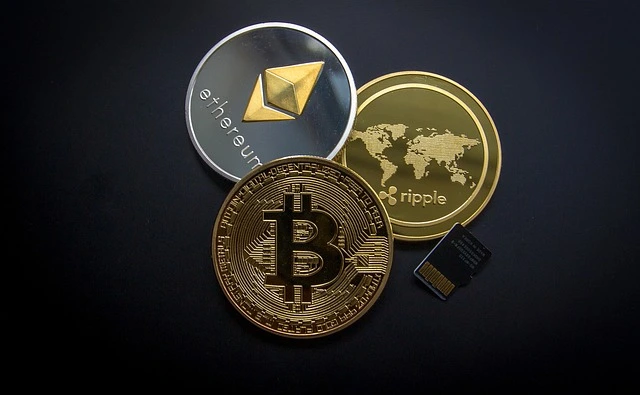Alternative Cryptocurrencies

What Are Altcoins?
Altcoins encompass a wide range of digital assets, each with its own unique characteristics, purposes, and goals. Some altcoins aim to improve upon Bitcoin’s limitations, such as scalability or transaction speed, while others focus on specific use cases like decentralized finance (DeFi), privacy, or smart contract functionality.
Diversification and Investment Potential
- Spreading Risk: Investing solely in Bitcoin exposes a portfolio to the volatility and performance of a single asset. Altcoins, on the other hand, present an opportunity to spread risk by investing in a variety of cryptocurrencies. Different altcoins may have varying levels of correlation with Bitcoin and each other, meaning they may react differently to market conditions. By diversifying across multiple altcoins, investors can potentially mitigate the impact of adverse price movements on their overall portfolio.
- Exposure to Different Sectors and Use Cases: Altcoins represent projects and cryptocurrencies with unique features and purposes. Some altcoins focus on decentralized finance (DeFi), aiming to revolutionize traditional financial systems. Others may specialize in privacy–enhancing technologies, gaming, supply chain management, or other specific industries. By investing in altcoins across different sectors, investors gain exposure to innovative projects and emerging trends, allowing them to participate in the growth potential of specific niches within the crypto ecosystem.
- Potential for Higher Returns: While Bitcoin has demonstrated its long–term value and stability, altcoins have the potential to deliver higher returns. Many successful altcoins have experienced substantial growth, sometimes even outperforming Bitcoin in terms of percentage gains. Early adopters of altcoins like Ethereum, Ripple, or Litecoin have witnessed significant appreciation in the value of their investments. However, it’s important to note that potential returns come with increased risk, as the altcoin market can be more volatile and subject to speculative trends.
Participating in New Technological Advancements: Altcoins often introduce new technologies, protocols, or improvements to existing blockchain platforms. Investing in specific altcoins can provide exposure to these technological advancements, giving investors the opportunity to support and benefit from the progress being made in the crypto space. For instance, altcoins built on platforms like Ethereum enable the creation of decentralized applications (DApps) and the execution of smart contracts, which have opened a wide range of possibilities in areas like finance, gaming, and governance.
Notable Altcoins

1. Ethereum (ETH): Ethereum is the second–largest cryptocurrency by market capitalization, renowned for its smart contract functionality. It introduced the concept of decentralized applications (DApps) and enabled the development of various projects, including decentralized finance (DeFi) protocols, non–fungible tokens (NFTs), and more. Ethereum’s native cryptocurrency, Ether (ETH), serves as the fuel for executing transactions and running applications on the Ethereum network.
2. Ripple (XRP): Ripple is a digital payment protocol designed for fast and low–cost international money transfers. Its primary goal is to enable financial institutions to settle cross–border transactions efficiently. Ripple’s native cryptocurrency, XRP, acts as a bridge currency to facilitate the transfer of value across different fiat currencies. Ripple’s technology has the potential to disrupt traditional banking systems by offering faster and more cost–effective alternatives.
3. Litecoin (LTC): Developed by Charlie Lee, a former Google employee, Litecoin is known as the “silver” to Bitcoin’s “gold.” It is a peer–to–peer cryptocurrency comparable to Bitcoin but with quicker block generation times and a different hashing algorithm. Litecoin has gained popularity as a payment method due to its ability to process transactions quickly and with lower fees compared to Bitcoin.
4. Cardano (ADA): Cardano is a blockchain platform aimed at providing a safe and long–term foundation for the creation of decentralized apps and smart contracts. It stands out for its scientific and peer–reviewed approach to development, which emphasizes security and reliability. Cardano’s native cryptocurrency, ADA, is used for staking and participating in the platform’s consensus mechanism.
5. Polkadot (DOT): Polkadot is a multi–chain platform that enables interoperability between different blockchains. It allows independent blockchain networks to communicate and share data securely. Polkadot’s vision is to create a decentralized web where various specialized blockchains can interact seamlessly. The native cryptocurrency, DOT, is used for governance and
staking within the Polkadot network.
6. Chainlink (LINK): Chainlink is a decentralized oracle network that connects smart contracts with real–world data and external APIs. It aims to solve the issue of obtaining trustworthy and reliable data for smart contract execution. Chainlink’s oracle network facilitates the secure and reliable transfer of data onto the blockchain, enabling smart contracts to interact with real–world events
and application


